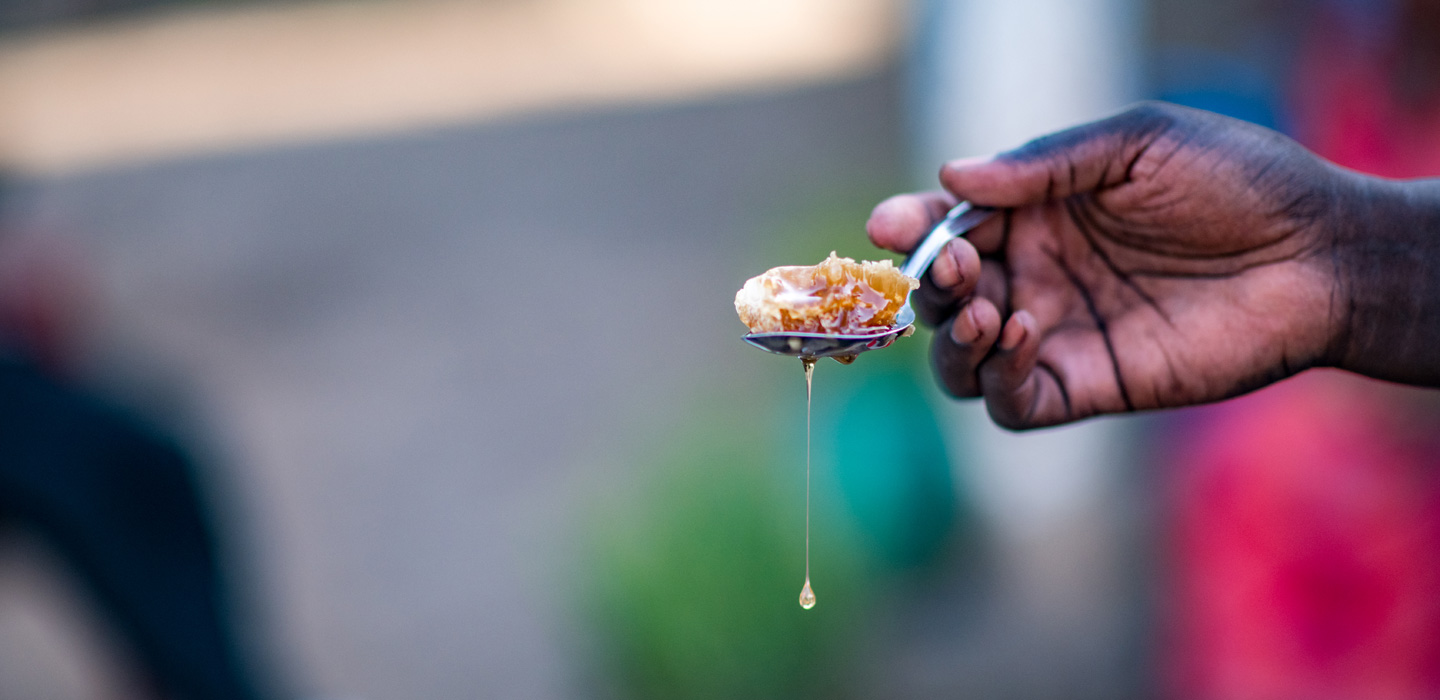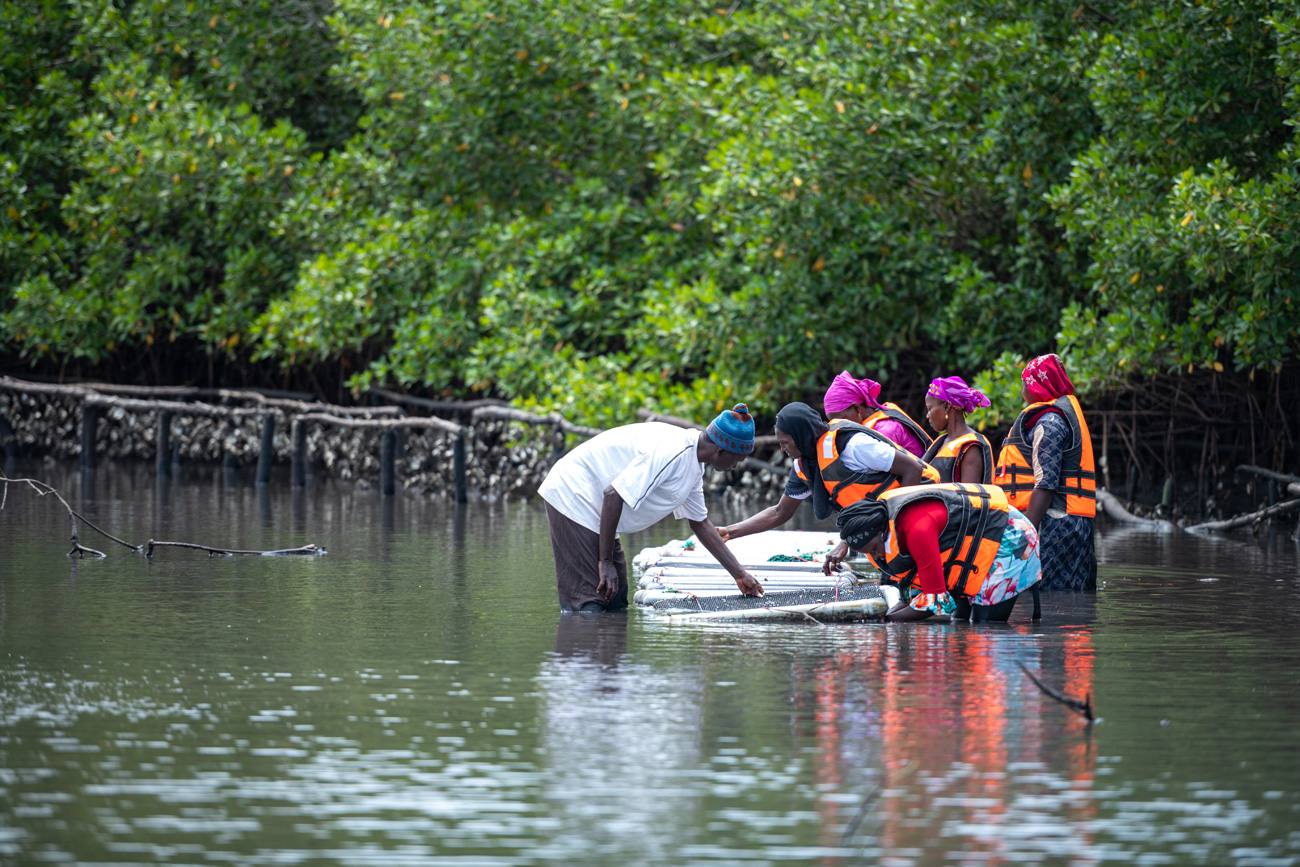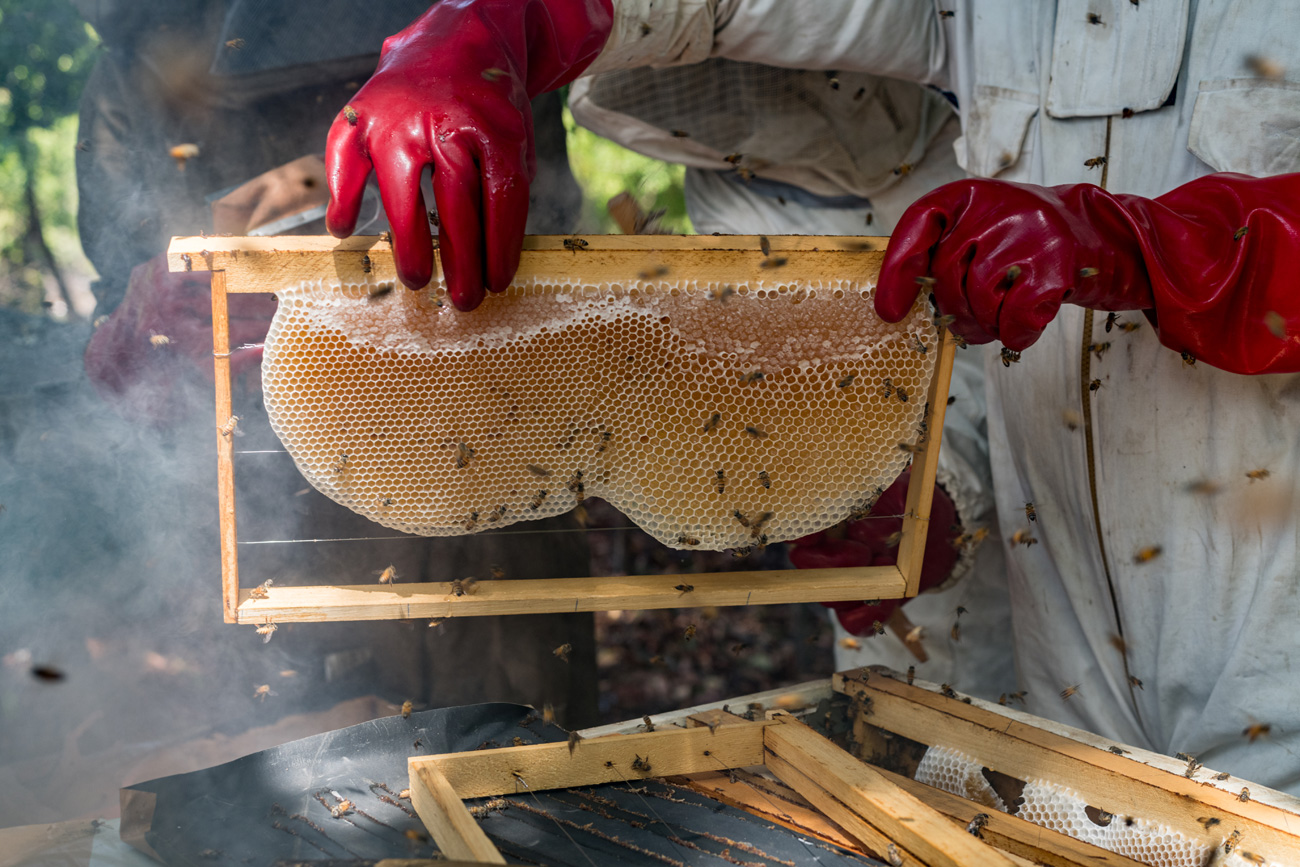Oysters and honey: The perfect combination for Senegal’s Delta of Saloum
IFAD Asset Request Portlet
Asset Publisher
Oysters and honey: The perfect combination for Senegal’s Delta of Saloum
Estimated reading time: 4 minutes
Tourists come from far and wide to see Senegal’s famed Delta of Saloum. This south-western corner of the country’s coastline is renowned for its mangrove ecosystem: a maze of twisting waterways and lush greenery that gives way to the open seas. Its many nature reserves, beyond being popular with the visitors, are home to many aquatic and terrestrial species.
The mangroves also sustain the area’s villages. These communities have depended on the delta’s rich biodiversity for centuries, but until recently, they had mostly been engaged in subsistence farming. With the arrival of PARFA, however, the mangroves have become a source of wealth for the area’s rural people.
The PARFA project is the result of a collaboration between IFAD, UNIDO, and the Government of Senegal. Its aim is to support small-scale producers in several regions of Senegal through developing the agriculture sector. Its usual methods involve offering grants, training and loans, especially to young people, through farmers’ associations and cooperatives. As part of its work in the Saloum Delta, PARFA also funded a large-scale restoration of the area’s mangroves. This set the stage for new agricultural ventures involving two of the area’s best local products: oysters and honey.
 |
| Members of AIVD inspect their oyster nets. Oyster cultivation is more than a reliable source of income: it contributes directly to restoring the mangrove environment. ©IFAD/Ibrahima Kebe Diallo |
Oysters: An everyday luxury
“Before I started this business, I didn’t even know that oysters could be farmed,” says Marianne Ndong.
Marianne is a member of AIVD, a local farmers’ association that brings together people from the villages of Dassilamé Sérère, Bani, and Sourou in the commune of Toubakouta. Through PARFA, the AIVD received training in cultivating and processing oysters. Its members now grow oysters in dedicated nurseries, then boil and dry them in preparation for packaging and sale.
“A tub full of dried oysters does not make you much profit,” Marianne says. “Now we see that, by transforming and jarring them, you earn a lot more.”
Oysters bring many benefits to rural producers and the regional economy. Cooked and then dried in the sun or prepared as a side dish, oysters are a treat even for amateur chefs. They are a good source of animal protein, and they are very easy to preserve. According to the PARFA participants’ estimates, oyster production can reach more than three tonnes per year, for a market value of several million CFA francs. Oyster farming accounts for more than 70 per cent of the jobs in the local value chain, and it is an essential source of income and employment for women and young people, who can earn up to 7,500 CFA francs (about US$13.40) per day.
Mamadou Bakhoum, coordinator of the AIVD, knows the issue well. He has seen local communities benefit from oysters for a very long time, and he is glad the fledgling processing industry is bringing a new dimension to the sector.
“Somehow, people always underestimate the economic power of the mangrove,” he says.
 |
| Honeybees who live in mangrove forests have an incredibly important job: their work contributes to restoring the forest and produces a highly valued honey. ©IFAD/Ibrahima Kebe Diallo |
Mangrove honey brings in tourists from all corners
Shellfish are only one of the many species that thrive in the mangrove ecosystem. Another is honeybees.
In fact, mangrove honey is highly prized by both the local population and the tourists who come from all over the world. Its selling price sometimes reaches 4,000 CFA francs (US$7.14) per kilogram. But despite record production of up to 800 kilograms per year, it is sometimes impossible to satisfy the market because demand remains so high.
Recognizing the potential of mangrove honey to develop the local agriculture sector, PARFA therefore trained some of the local farmers’ groups in beekeeping.
“The project has helped us a lot,” says Bana Diouf, president of Mbella Goroum, one of the women’s groups funded by the project.
As with several other groups in the area, PARFA provided the members of Mbella Goroum with everything they needed to get started – beehives, protective gear, and other equipment. They were able to make use of the equipment right away, and since their first harvest of honey, they haven’t looked back.
For Bana, beekeeping is a way to contribute to the family finances and fund her children’s education.
“I like beekeeping because it is good for my family and myself,” she says. “We can share what we earn and keep the rest for ourselves. We then use some of our savings to reforest the mangrove and protect it, because we know we have to take great, great care of it.”
In fact, beekeeping has multiple advantages. Not only do the bees play a fundamental role in yields of other crops, they also help maintain biodiversity and restore the land.
Revitalizing the local economy
According to Mamadou, both oyster farming and beekeeping are bringing enormous benefits for both local communities and the mangrove ecosystem. The jobs generated by these new industries are helping many young people avoid having to migrate elsewhere in search of work, and the industries themselves are helping advance equality between men and women.
“There are many benefits even after the sale,” says Maimouna Camara, a beekeeper. “We make more profit, and this allows me to not only enrol my children in school, but buy supplies and other things.”
“And,” she adds, “If I want to have oysters, I know where to find them.”
Learn more about IFAD’s work in Senegal.
Publication date: 28 October 2021